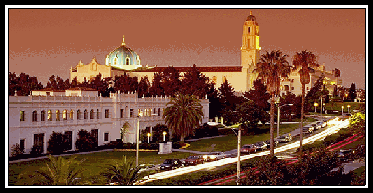
FUNDAMENTALS OF BUSINESS ECONOMICS
 |
| Summer 2011 |
 |
Graduate (S) Business Administration 503 FUNDAMENTALS OF BUSINESS ECONOMICS |
|
|
|
| | HOME | SYLLABUS | CALENDAR | ASSIGNMENTS | ABOUT PROF. GIN | |
Study Guide for FinalI'll formulate the study guide in terms of learning objectives for the second part of the class: 1. Know what happens at the macroeconomic equilibrium 2. Understand how the circular flow model can be used to explain recessions, along with the impact on various variables 3. Be able to show the various parts of the business cycle 4. Understand the difference between procyclical, countercyclical, and acyclical variables 5. Understand how the checking deposit multiplier is calculated and used 6. Know how other factors affect the magnitude of the checking deposit multiplier 7. Be able to show how open market operations can be used to affect the money supply 8. Know how changing the discount rate can be used to affect the money supply 9. Know how changing the reserve requirement can be used to affect the money supply 10. Understand the impact of monetary policy (both expansionary and contractionary) 11. Know the impact of the different types of lags in monetary policy 12. Know the factors affecting the real interest rate 13. Understand the factors affecting the risk premium part of the real interest rate 14. Understand what is meant by the term structure of interest rates and the yield curve 15. Understand the impact of different factors on the supply of real loanable funds 16. Understand the impact of different factors on the demand for real loanable funds 17. Be able to show how different events impact the real loanable funds market and the interest rate 18. Understand and be able to show the different parts of the aggregate supply curve 19. Understand the impact of different factors on aggregate supply 20. Understand the impact of different factors on the components of aggregate demand 21. Understand how the aggregate supply and aggregate demand model can be used to determine the impact of different events on the economy 22. Understand and be able to represent how a recession may result in an economy 23. Understand and be able to represent how demand-pull inflation may result in an economy 24. Understand and be able to show the short-run Phillips curve 25. Understand and be able to show the relationship between the short-run and the long-run Phillips curve 26. Understand and be able to represent how cost-push inflation may result in an economy 27. Understand and be able to represent how deficits may impact interest rates 28. Know what is meant by crowding out 29. Understand and be able to represent how deficits impact the real goods market 30. Understand and be able to represent how fiscal policy can be used to deal with recessions 31. Understand and be able to represent how fiscal policy can be used to deal with inflationary expansions 32. Know the different types of lags in fiscal policy 33. Understand the issues surrounding deficits and the debt 34. Know how to convert prices in one currency to prices in another 35. Understand how changes in the exchange rate affect the prices and quantities of imports and exports 36. Know how to calculate the real exchange rate 37. Know how to calculate the percentage change in real exchange rates 38. Be able to show how changes in relative international price levels impact the foreign exchange market 39. Be able to show how changes in relative international real GDP impact the foreign exchange market 40. Be able to show how changes in relative international interest rates impact the foreign exchange market 41. Be able to show how changes in relative international risks, taxes, and expectations impact the foreign exchange market 42. Be able to show how changes in relative central bank intervention impact the foreign exchange market 43. Be able to show how a fixed exchange rate is achieved by central bank intervention 44. Understand the difference between a fixed band exchange rate system, a crawling peg, and a managed float 45. Know the items included in the current account and those included in the financial / capital account 46. Know the relationship between the current account, financial / capital account, and reserves account 47. Know how to calculate the different balance of payments measures and the relationship between each 48. Be able to analyze the impact of different events in a flexible exchange rate system . Recommended problems: Chapter 7 - 5, 12 Chapter 8 - 2 Chapter 9 - 9 Chapter 10 - 9 Chapter 13 - 3, 8 Chapter 14 - 6 Answers to recommended problems . |